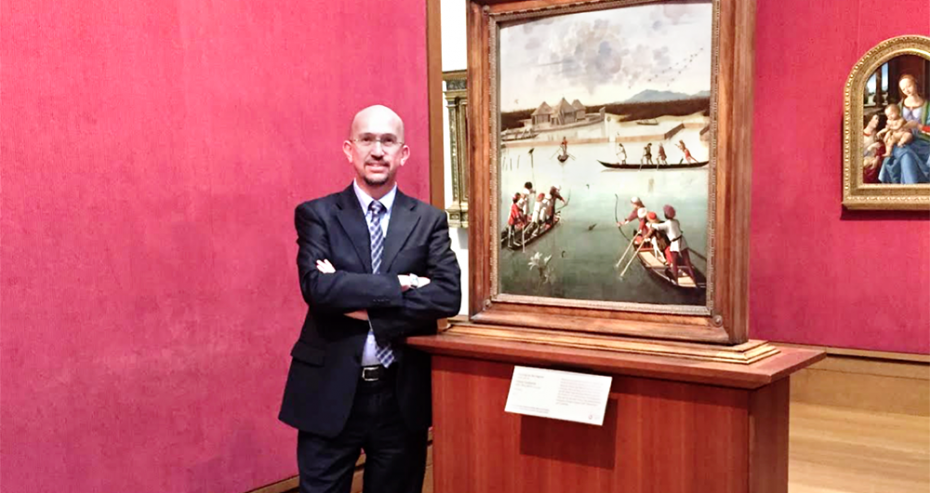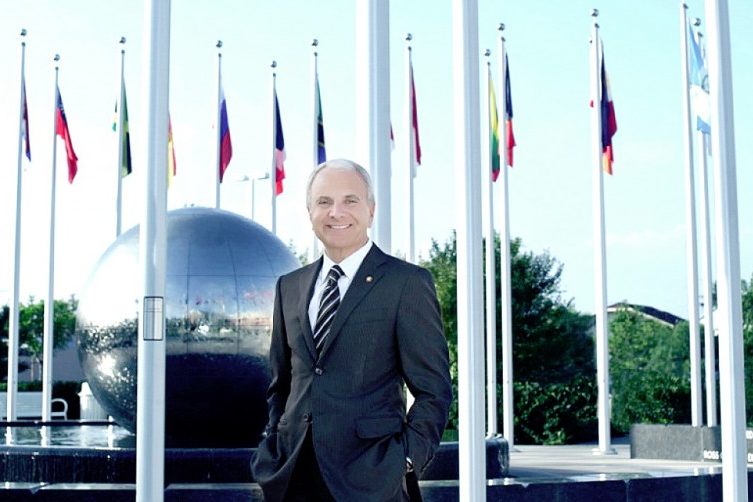Almost a year ago, Italian art historian and curator Davide Gasparotto was appointed Senior Curator of Paintings of the J. Paul Getty Museum in Los Angeles. Born in Bassano del Grappa, Veneto region in Northern Italy, Dr. Gasparotto is “A leading figure in the field of Renaissance through 18th century Italian art, while also having an exceptionally broad knowledge of European art in other periods and media” – as director Timothy Potts explained.
After studying the History of Art and Classical Archaeology at the University of Pisa, and the History of Art Criticism at the prestigious Scuola Normale Superiore in Pisa, Dr. Gasparotto worked at the National Gallery of Parma for 12 years and in 2012 became director of the Galleria Estense in Modena. He was also known in the U.S., where he spent some time as a visiting fellow at the National Gallery in Washington D.C. (2007) and the NY Metropolitan Museum of Art (2011-2012).
Dr. Gasparotto, considering your successful career in Italy, what did persuade you to accept the Getty’s offer and move to Los Angeles?
On one side, it was the challenge of a new and totally different work experience that excited me; on the other side, it was the reputation of the Getty all over the world, not only as a museum but also as a very lively scholarly community. I think that the presence of the different institutes – the Museum with its wonderful collections, the Foundation with its many projects, the Research Institute with its incredible resources for research and the many visiting scholars, the Conservation Institute for the conservation programs – make the Getty a unique and very special place. As you know, in Italy we have some of the most beautiful museums in the world, but we do not have a place where the life of a museum curator can be enriched and stimulated by the presence of these other related fields of scholarship.
What did you bring to the Getty from your Italian education and previous professional experiences?
First of all, I think I am bringing a fresh view of the paintings collection and the extraordinary enthusiasm for a new experience. Speaking about my education and previous experiences, I would say that my scholarly profile is characterized mainly by a profound attention to the cultural contexts, to the reception of the works of art and to the history of collecting. I have a vision of art history as a whole, where painting, drawing, sculpture and the decorative arts are strongly interweaved. The Museum Departments with their curators are only artificial creations which respond to a practical need, but I think that museum displays and exhibitions must be focused on showing to the general public the dialogue of the different art forms, pointing out their technical and expressive qualities but also their intrinsic unity in different historical periods.
Are you working on any particular project at present?
In these first few months, I was committed to reshaping our painting galleries, especially the Renaissance galleries, where I tried to privilege the dialogue between painting and sculpture and between Italian and Northern Renaissance. I have in preparation a small exhibition, focused on French frames from Louis XIII to Louis XVI (it will open September 15th), grounded exclusively from our collection. I was always attracted by the relation between paintings and frames, and conscious of how much a frame contributes to the appreciation and reception of a certain picture. The evolution of the taste for frames in France from the Seventeenth to the Eighteenth century is a particularly fascinating chapter in the history of the European picture frame. As a more long-term project, I am putting in schedule an exhibition focused on the great Venetian painter Giovanni Bellini (ca. 1430-1516), one of my favorite artists of the Italian Renaissance, and his depiction of landscape in small devotional paintings.





























